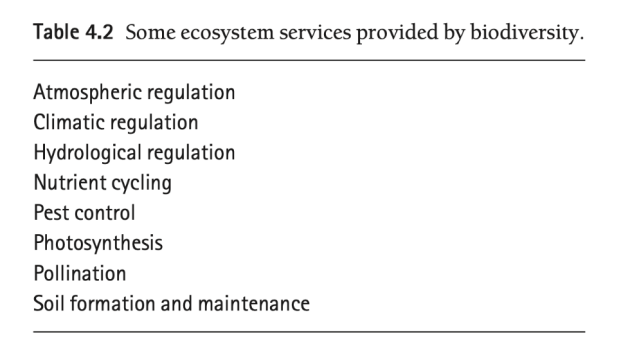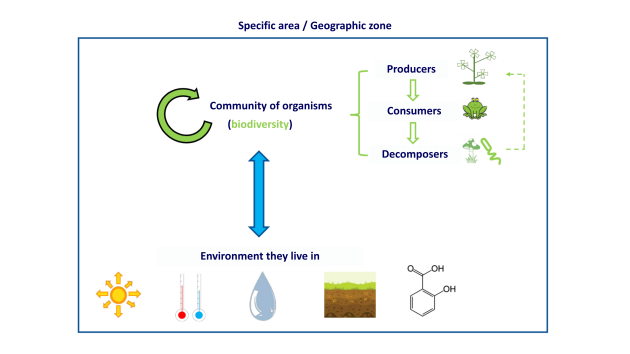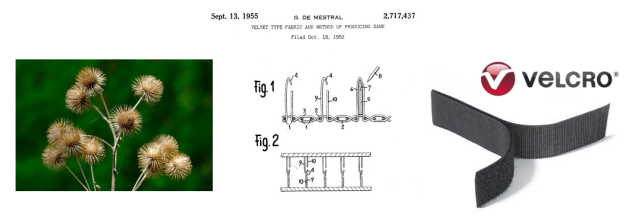Biodiversity and ecosystem services
What is an ecosystem?
An ecosystem is a system formed by living organisms and the environment where they live.
It is a physical space in which living organisms interact with one another (e.g. by producing, consuming or degrading organic matter) and with abiotic factors (such as light, temperature, chemicals, water...).
Ecosystem services, an anthropocentric concept
In this part of the lecture, we will adopt an anthropocentric point of view, which means we will consider things from our own perspective. As humans, why should we care about biodiversity and what is our interest in maintaining rich ecosystems?
In 1997, Daily introduced the notion of ecosystem service, which is a key concept to answer this question. Ecosystem services are services that are provided to humans by functional ecosystems. Before that, it was common to consider the natural world as resources. Some of them were living (plants and animals seen as resources for food, wood, leather or wool); others were not (water, stone, sand). These resources were considered passive and their interactions were neglected. The concept of ecosystem services on the other hand insists on interactions and suggests a transaction between humans and living ecosystems... which invites us to think about the reciprocity of the transaction.
" Source : Daily G.C., 1997. Nature's Services: societal dependence on natural ecosystems "
Example : Example of ecosystem services

Ecosystem services can be material services: photosynthesis, regulation of atmosphere composition and of climate, water filtration, pollinisation. For instance, the formation of a functional soil requires decades and involves not only plants and animals but also micro-organisms.
They can also be immaterial, as illsutrated by the two following examples:
Example : Larousse and dandelion seeds
The living world is an abundant source of cultural inspiration. Here, we show how an editor of dictionaries, whose purpose is to disseminate knowledge, chose dandelion as its symbol because dandelion seeds are known to travel as far as a kilometer.
This is an example of metaphor, a figure of speech used to express an analogy. Metaphors are not only used by poets, they are omnipresent in our productions and influence the way we see the world and build scientific concepts. Many of them are associated with living organisms.
Example : Biomimicry and hook-and-loop fasteners
Nature also fosters our technological creativity. For instance, Velcro (Velours-Crochet or Velvet-Hook), invented in the 1950s by George de Mestral, is a classical example of biomimicry, a design conception based on bio-inspiration.
How much would we have to pay if ecosystem services were offered by companies instead of ecosystems?
In 1997 Robert Costanza found an amount (probably underestimated) of 33 trillion dollars for the value of ES.
In 1997 the global GDP was 18 trillion dollars.
Nature provides us with at least twice as much as the public and private sectors altogether, which is (one of the reasons) why we need functional ecosystems around us.


